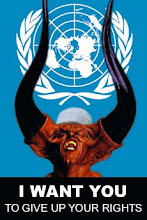 "The nuclear doomsday machine." It's a Cold War term that has long seemed obsolete.
"The nuclear doomsday machine." It's a Cold War term that has long seemed obsolete. And even back then, the "doomsday machine" was regarded as a scary conjectural fiction. Not impossible to create—the physics and mechanics of it were first spelled out by U.S. nuclear scientist Leo Szilard—but never actually created, having a real existence only in such apocalyptic nightmares as Stanley Kubrick's Dr. Strangelove.
In Strangelove, the doomsday machine was a Soviet system that automatically detonated some 50 cobalt-jacketed hydrogen bombs pre-positioned around the planet if the doomsday system's sensors detected a nuclear attack on Russian soil. Thus, even an accidental or (as in Strangelove) an unauthorized U.S. nuclear bomb could set off the doomsday machine bombs, releasing enough deadly cobalt fallout to make the Earth uninhabitable for the human species for 93 years. No human hand could stop the fully automated apocalypse.
======================================================

















No comments:
Post a Comment